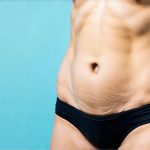Post-meal discomfort isn’t always about digestion; sometimes, it’s about pressure. Many people experience an uncomfortable fullness or even mild pain after eating, attributing it solely to their digestive system working overtime. While this is often true, a frequently overlooked factor can be bladder compression, especially if you’re prone to bloating or have sensitivities to certain foods. The simple act of eating – and the subsequent expansion of your abdomen – can put pressure on your bladder, leading to urges to urinate, discomfort, or even accidental leakage. This isn’t necessarily a sign of a medical problem, but understanding the mechanics behind it and adopting proactive strategies like post-meal walking can significantly improve comfort and well-being.
This article focuses on practical tips for incorporating post-meal walking into your routine as a preventative measure against bladder compression and associated discomfort. We’ll explore why this simple habit works, how to implement it effectively, and what considerations to keep in mind based on individual needs and lifestyles. It’s about empowering you with knowledge and tools to take control of your bodily comfort after meals and minimize any disruptive effects from increased intra-abdominal pressure – all without resorting to complex medical interventions or restrictive diets.
Understanding the Connection: Digestion, Abdominal Pressure, & Bladder Health
The digestive process naturally creates some level of abdominal pressure. As food moves through your system, it expands in your stomach and intestines. This expansion isn’t usually a problem, as our bodies are designed to accommodate it. However, certain factors can exacerbate this pressure – overeating, consuming gas-producing foods, or having pre-existing digestive issues like bloating or irritable bowel syndrome (IBS). When the abdomen expands, it directly presses on surrounding organs, including the bladder. This compression reduces the bladder’s capacity and increases the sensation of urgency, even if your bladder isn’t actually full.
This is where post-meal walking comes in. Gentle movement helps stimulate digestion, reducing bloating and gas production – both major contributors to abdominal pressure. Walking also encourages the natural downward movement of food through the digestive tract, lessening the build-up of pressure higher up. Importantly, it doesn’t require strenuous exercise; a leisurely stroll is often sufficient to create noticeable benefits. This proactive approach can prevent the bladder from becoming overly compressed and minimize uncomfortable symptoms.
Furthermore, being mindful of posture during and after meals plays a vital role. Slouching or bending over increases abdominal pressure, while maintaining an upright posture allows more space for your internal organs, reducing the risk of compression. Combining good posture with post-meal walking is a powerful strategy for promoting both digestive health and bladder comfort.
Implementing Post-Meal Walking: A Practical Guide
The beauty of post-meal walking lies in its simplicity. It’s not about achieving a specific distance or pace; it’s about incorporating gentle movement into your routine after eating. Begin with just 5-10 minutes of walking at a comfortable pace immediately following each meal. The speed should allow you to comfortably hold a conversation – no need for brisk power walking! Gradually, you can increase the duration and frequency as tolerated and as part of your overall fitness goals.
Consistency is key. Aim to walk after every meal – breakfast, lunch, and dinner – to establish a habit and maximize the benefits. Even a short walk around your house or office can make a difference. Consider incorporating it into your daily routine: perhaps walking during a coffee break, taking the stairs instead of the elevator, or doing a quick lap around the block after lunch. Listen to your body; if you feel fatigued or uncomfortable, rest and adjust the intensity as needed. Remember that even small changes can have a significant impact on reducing abdominal pressure and improving bladder health over time.
Optimizing Your Walk for Bladder Comfort
- Pace yourself: Avoid strenuous activity immediately after eating. A leisurely walk is ideal.
- Focus on posture: Maintain an upright posture while walking to minimize abdominal pressure.
- Stay hydrated: Drinking water after your meal (and during your walk) aids digestion and helps prevent constipation, which can contribute to bloating. However, avoid excessive fluid intake immediately before or during the walk if you’re concerned about needing to urinate frequently.
- Clothing considerations: Wear comfortable shoes and clothing that don’t restrict movement or put pressure on your abdomen.
Dietary Considerations & Bladder-Friendly Foods
While walking addresses the physical aspects of bladder compression, diet plays a significant role too. Identifying foods that trigger bloating or gas can help minimize abdominal pressure in the first place. Common culprits include beans, lentils, broccoli, cabbage, carbonated drinks, and artificial sweeteners. Keeping a food diary can help you pinpoint your personal triggers.
- Focus on fiber: Soluble fiber (found in oats, apples, and bananas) promotes healthy digestion without causing excessive gas.
- Limit processed foods: These often contain ingredients that contribute to bloating and inflammation.
- Stay hydrated with bladder-friendly fluids: Water is best! Limit caffeine and alcohol, as they can irritate the bladder – consider lifestyle tips for a healthier bladder.
Addressing Individual Needs & Seeking Professional Guidance
Post-meal walking is generally safe for most people, but there are situations where it’s important to exercise caution or seek professional advice. If you have underlying medical conditions such as pelvic floor dysfunction, urinary incontinence, or a history of abdominal surgery, consult with your doctor or a physical therapist before incorporating post-meal walking into your routine. They can provide personalized recommendations and ensure that the activity is appropriate for your specific needs.
If you experience persistent bladder discomfort despite implementing these strategies, it’s essential to rule out any underlying medical issues. Symptoms like frequent urination, urgency, pain, or blood in the urine should be evaluated by a healthcare professional. Remember, this information is not intended as a substitute for medical advice; always consult with your doctor if you have concerns about your health. You might also want to explore tips to prevent flare-ups when experiencing discomfort.





















